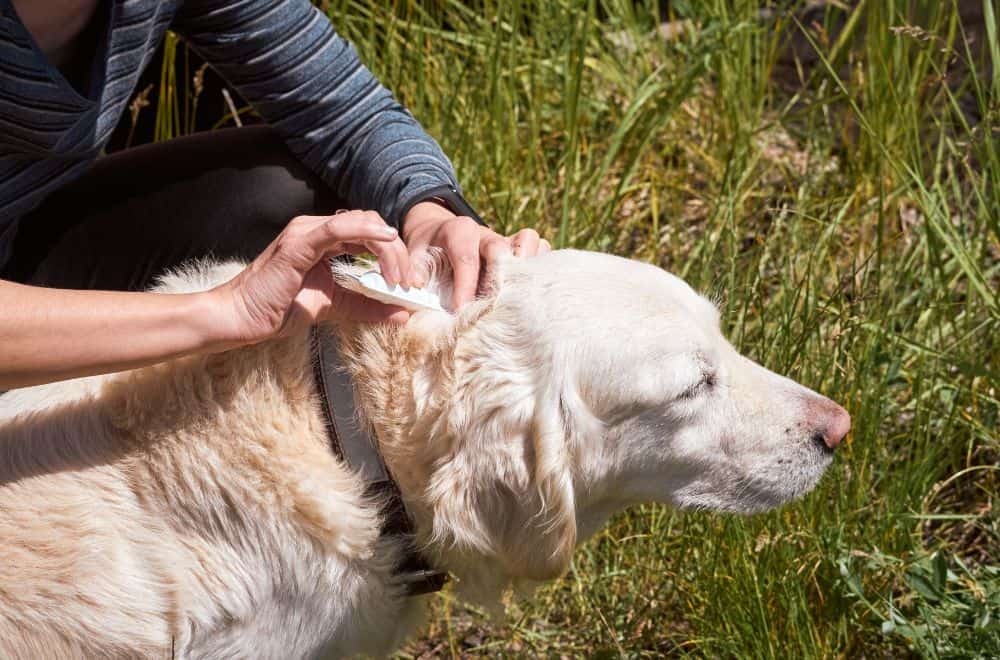If you have pets, the chances are that one day you will notice a flea emerging from their coat, and the next thing you know, you’ve got a full-blown infestation – and when this happens, one method you might think of turning to is a flea bomb.
But how effective are flea bombs? Are they a good idea? Or are there better ways of dealing with a flea infestation? For anyone wondering about questions such as these, in this post, you’ll find all the info you need as we answer the question, how long do fleas live after bombing?
How Long Do Fleas Live After Bombing? – The short answer
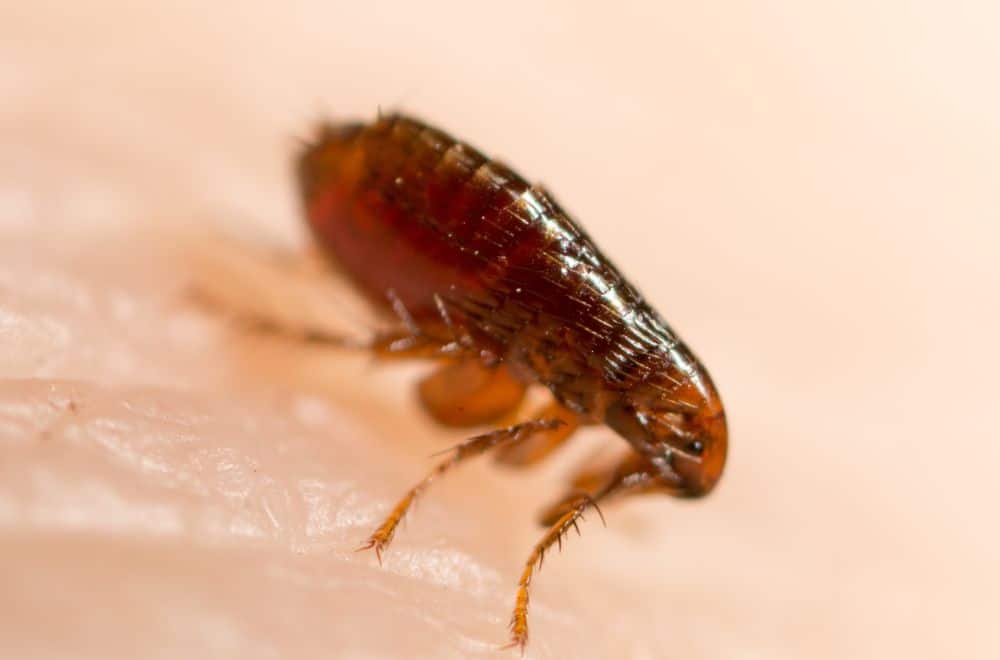
In a moment, we’ll talk about why the answer to this question is not as simple as it might seem – but before we do that, let’s start with the short answer.
How long do fleas live after bombing? Usually, the fleas in the treated area will die within around 24 hours – or a couple of days at most.
However, there’s more to it than just this, so let’s talk about why now.
Why it’s not so simple
There are two main reasons why flea bombs won’t kill 100% of fleas in your home, and the first is that although the pesticide is effective at killing any adult fleas and larvae that come into contact with it, the chemicals won’t penetrate all areas where fleas are hiding.
When the flea bomb releases the pesticide, the pesticide sticks to the first surface it comes into contact with, so it won’t penetrate deep into your carpet.
However, fleas like to stay deep within carpets, and that’s also where many eggs end up, so the larvae can be found there too – and if the fogger doesn’t penetrate deep enough, it won’t kill the fleas and larvae hiding out there.
Furthermore, a flea bomb won’t penetrate areas like cabinets and closets or furniture, so fleas can also hide out there and remain safe.
So for this reason, while a flea bomb can help kill some fleas, it won’t get them all.
The second reason a flea bomb alone won’t end an infestation has to do with the lifecycle of fleas, so let’s talk about that now.
The lifecycle of fleas
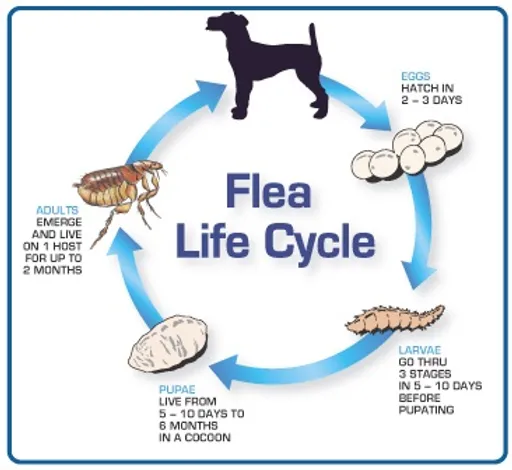
Image Credit: bourbonvet
When we think of a flea, we usually imagine the tiny, hopping insects that jump onto our pets and suck their blood.
However, this is only the adult stage of a flea’s life, and there are three other stages that come before that.
When an adult flea emerges from its cocoon, it needs to find a host quickly to feed – after that, its next priority is to mate, and then for females, to lay eggs.
The eggs may be laid on the host, but many will fall off, ending up in the carpet, in your pet’s bedding, on the furniture – or even in your bed if the pet is allowed there.
Flea eggs usually hatch after between a day and a week, depending on the conditions. After this, the worm-like larvae will emerge and begin to feed on organic matter as well as “flea dirt”, the feces of adult fleas that contain dried blood.
They remain in this phase for between around five and 20 days, again depending on the conditions – then, when they are ready, they spin a cocoon and pupate.
Flea cocoons are sticky, and if the flea larvae pupate deep in your carpet, they can be hard to dislodge.
Once the flea larva enters the pupal stage, it can be ready to emerge from its cocoon within about a week. However, flea pupae can detect when a host is nearby – and if no host is present, they can remain in a dormant state for up to five months.
When a host is detected, the adult flea emerges. It then jumps onto the host, starts to feed and then mates 24 hours after feeding, beginning the cycle again.
How does this affect flea bombing?
An important point to note is that in a flea infestation, fleas will be present in all four stages – that is, as eggs, as larvae, as pupae and as adults.
Furthermore, adult fleas represent only a small proportion of the population. Fleas in the pupal stage make up a slightly larger proportion of the population than adults – but by far the largest part of the population is made up of eggs and larvae.
However, flea bombs only kill adults and larvae but leave the eggs and pupae unharmed. So since flea bombing has no lasting effect, after the treatment is finished, new eggs will hatch and new adults will emerge from pupae – and the infestation will begin again.
For this reason, even if a flea bomb successfully kills a large number of the adults and larvae in an area, it won’t end the infestation for good.
What are better ways to deal with fleas?
Although letting off a flea bomb and leaving it to deal with your infestation might seem like an attractive option, as we’ve seen, it’s unlikely to be effective.
So what can you do to rid your home and pets of fleas instead?
The key to dealing with fleas is to adopt a multi-pronged approach – just relying on one technique alone is unlikely to solve the problem.
Here are some of the things you’ll need to do:
1. Vacuum thoroughly and regularly
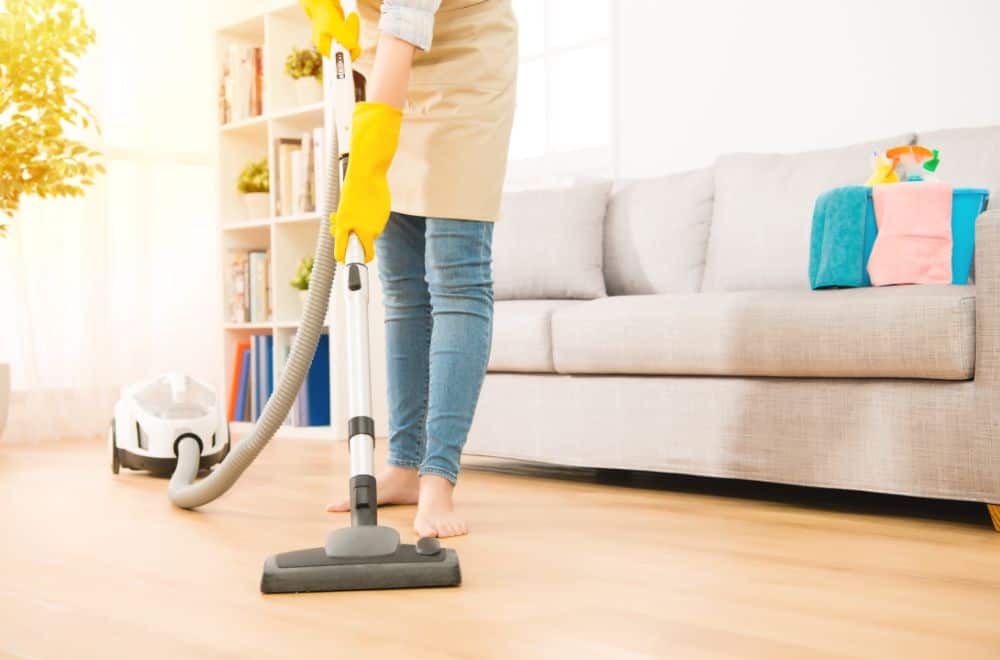
Start by vacuuming your home thoroughly. This will suck up any adult fleas that are present in your carpets, but it will also pick up any eggs and pupae that are there.
However, just doing it once won’t do the trick – so you’ll need to vacuum frequently thereafter too.
If you vacuum your carpets every day or every other day you will continue to suck up all the eggs and pupae that are being left there, slowly reducing the resident flea population.
After vacuuming, make sure you dispose of the waste carefully so the eggs and pupae don’t fall out and back into your home to continue the infestation.
2. Wash all bedding and pet bedding
As well as vacuuming your home, you will also need to wash all the pet bedding – and your bedding too.
After the initial wash, you should also continue to wash all bedding frequently until the infestation is resolved.
3. Clean furniture

Since fleas, flea eggs, larvae and pupae can be present in furniture, you’ll need to clean that thoroughly too.
Vacuum furniture such as couches, paying attention to all the nooks and crannies that could be harboring fleas at any stage of their lifecycle.
Again, after the initial clean, you’ll want to repeat it for the duration of the infestation.
4. Consider steam treatment
You may also consider steam-treating your carpets and furniture. This is a highly effective option since it’s one of the only methods capable of killing fleas in all four stages of their lifecycle.
5. Treat outdoor areas

Fleas and eggs may also be present in your yard, so make sure you treat any areas out there where they might be hiding out too.
6. Treat pets with anti-flea medication
As well as cleaning your home thoroughly and frequently, you’ll also need to focus on your pets.
You can speak to your vet for advice about this, but your options will include medication in the form of pills, anti-flea shampoo for washing them and flea collars.
Flea treatments work by preventing eggs from developing into adults, something very important in resolving an infestation.
7. Consider a flea bomb
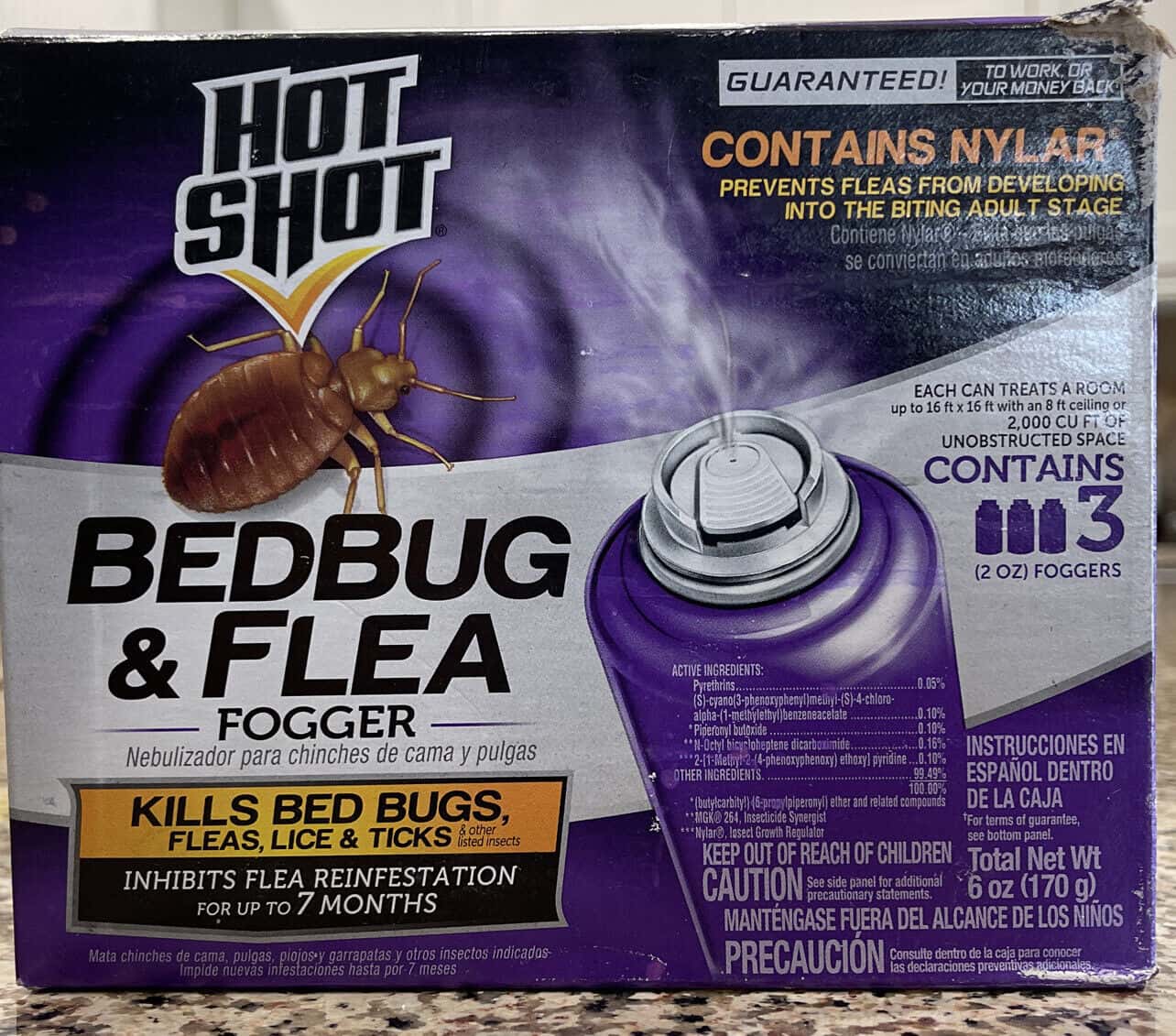
As part of a multi-pronged strategy, a flea bomb may also be used to bring the population under control.
8. Be patient
As well as using these methods, the other thing you’re going to need to do is to be patient. This is because it can take up to three months to fully eradicate all fleas from your home.
However, if you keep at it and maintain a strict anti-flea routine, you will eventually be able to get every last one of these pests out of your home.
How to use a flea bomb
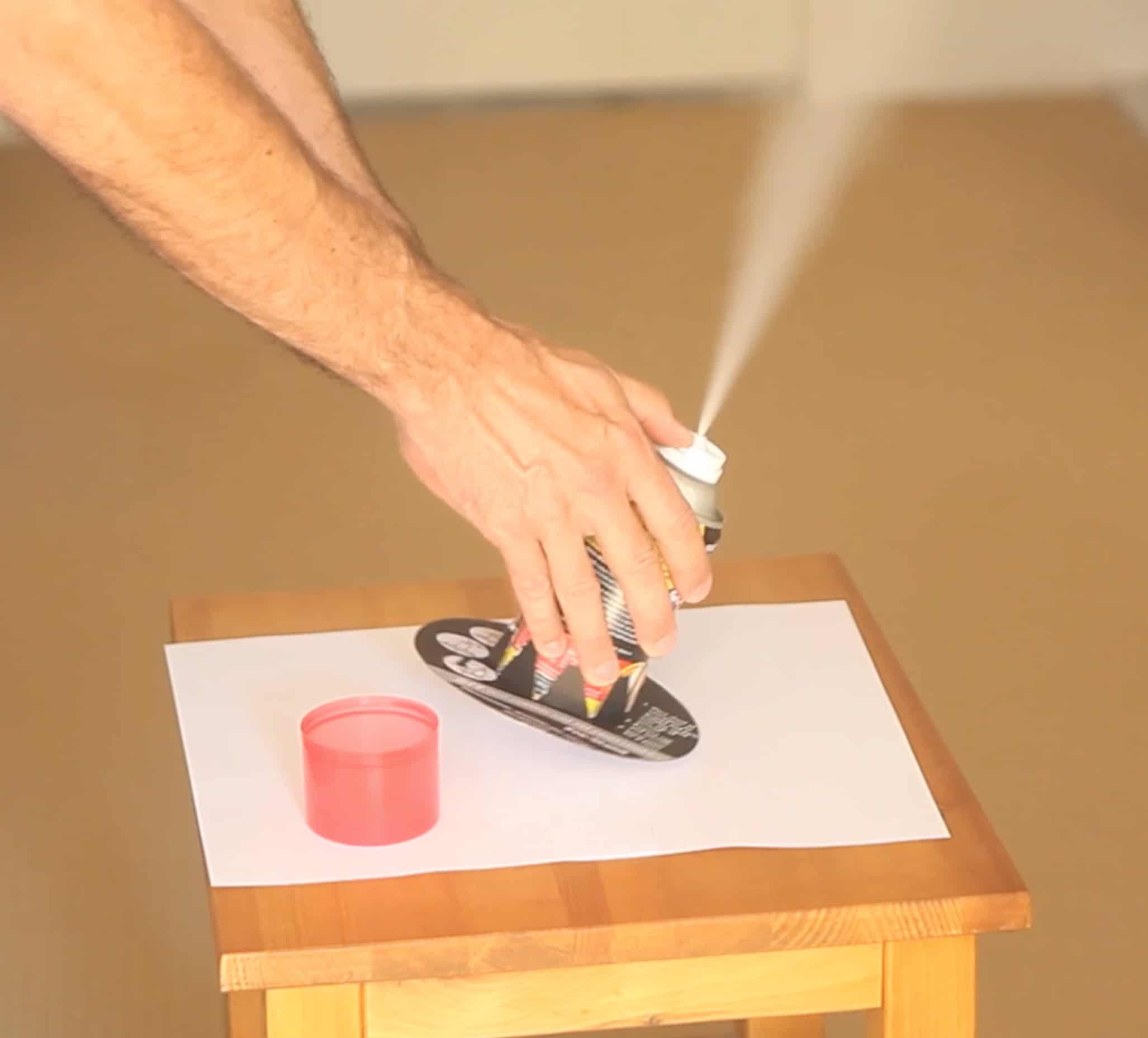
Image Credit: pestxpert
If you decide to use a flea bomb as part of your strategy, here’s a guide to how to do it.
1. Prepare your home
The first step in using a flea bomb is to prepare your home for the treatment.
Remove any food from the area to be treated, remove any plants from the area and cover fish tanks to prevent any fish from being affected. Turn off any electrical appliances in the area too since most flea bombs contain highly flammable materials.
Make sure you close all the windows because any wind will affect the effectiveness of the treatment, and some of the pesticide may also be blown out of the windows.
2. Place the bomb in the center of the room
Place the bomb in the center of the room to be treated on some sheets of newspaper or something similar and then leave the room, closing the door behind you.
If you plan to treat multiple rooms, you will need one flea bomb per room.
3. Leave the house for eight hours
After the bomb has been activated, you’ll need to leave the house for at least eight hours, so make sure you take everything with you that you’ll need.
When you leave, make sure you take all pets with you too. This includes any birds you might have in cages along with all cats and dogs and animals like hamsters.
4. Open all windows when you return
When you return to your house, open all the windows to aerate the house. Wash all food preparation surfaces and table surfaces where you eat.
Arguments against flea bombs
We’ve already mentioned that flea bombs are not considered effective at ending flea infestations alone, but there are some other reasons why you might not want to use one.
The main argument against flea bombs is that they cover your home with toxic pesticide, and this can be dangerous for any children or animals in your home.
Since most people who have fleas in their homes will also have pets – as that’s probably where the fleas came from in the first place – this is a strong argument to think carefully before turning to this method.
Tips for increasing the effectiveness of the treatment
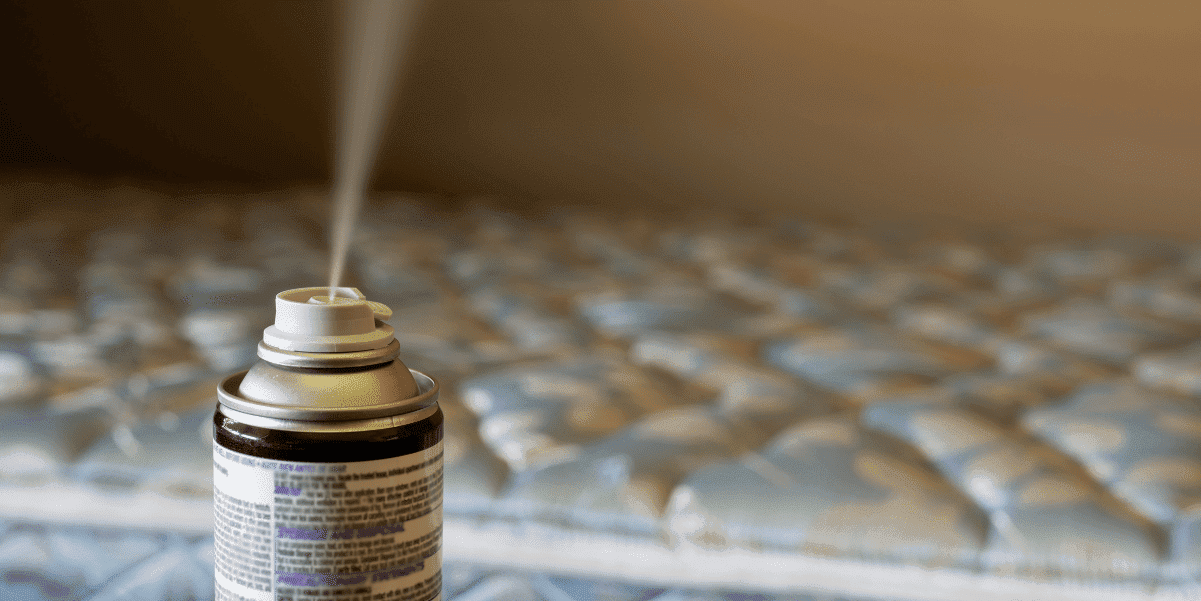
Image Credit: insectekpest
If, despite the limitations to the effectiveness of flea bombs and the dangers they pose to pets and children, you still choose to go ahead and use one, here are some tips for increasing the effectiveness of the treatment.
-
Read the instructions carefully
Although we’ve outlined the general procedure for using a flea bomb in this post, you should always read the instructions on the product you buy carefully.
This is because the procedure may vary from product to product, and the instructions may contain important directions you need to follow to use the bomb you have bought safely.
-
Repeat several times with seven-day intervals
Using a single flea bomb is unlikely to be effective, so you should repeat the treatment several times to ensure you kill as many fleas as possible.
If you repeat the treatment three or four times at weekly intervals, it will help you reduce the flea population in your home.
However, you should also understand that even by repeating this treatment several times, without taking other measures like vacuuming, washing bedding and treating your pets, the infestation will return after you stop the treatments.
-
Choose the right bomb for the size of the room
When choosing a flea bomb, you need to measure the room you are planning to treat and then choose a bomb that’s designed for a room of those dimensions.
-
Wear protective equipment when setting off the bomb
When setting off a flea bomb, it’s highly advisable to wear the proper protective equipment, which includes gloves, a mask and goggles. This will prevent you from getting sick from coming into contact with the toxic pesticide.
A possible weapon to use against fleas
As we’ve seen, the key to permanently ending a flea infestation is to adopt a multi-pronged approach, which involves lots of cleaning and vacuuming as well as treating your pets with medication.
There are some arguments against using flea bombs – not least due to their toxicity – but as part of your multi-pronged assault on the critters, flea bombs can be another useful weapon in your arsenal.
